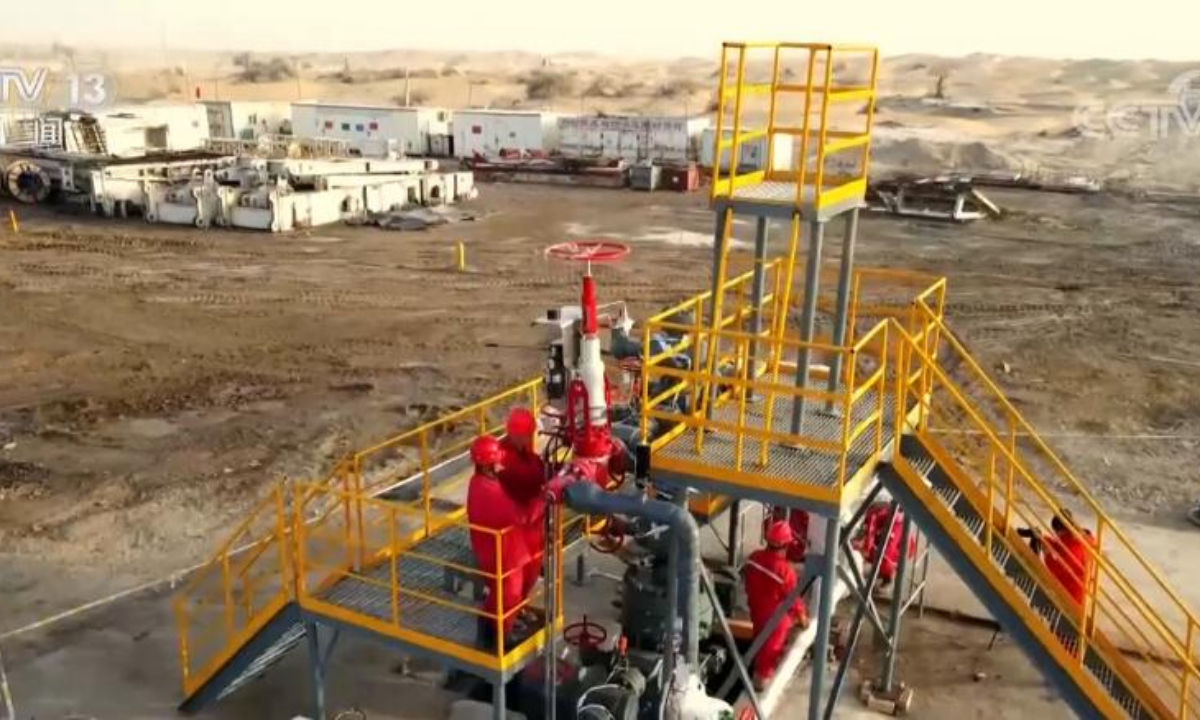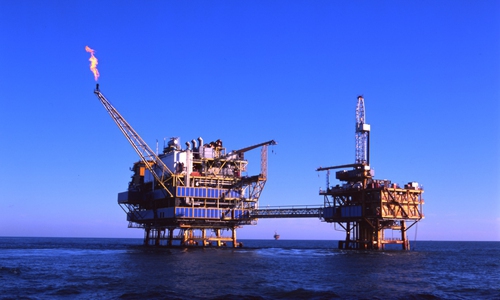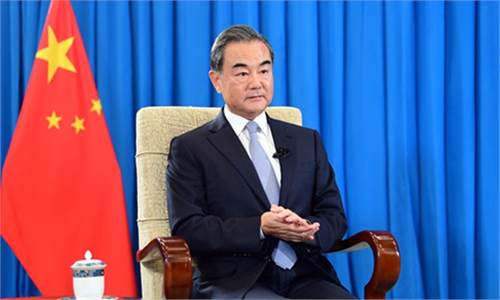
Photo: web
Oil and gas production has exceeded 10 million tons in the Fuman Oilfield area, a main crude oil block located in the Tarim Oilfield in Northwest China's Xinjiang Region, marking a breakthrough for China's ultra-deep oil and gas development amid efforts to consolidate the nation's energy security.
Since 2022, four 1,000-ton-level wells and 45 100-ton-level wells have been drilled within the Fuman Oilfield, with a drilling success rate of over 95 percent as the fastest developed deep oilfield in China, the country's state-owned energy giant China National Petroleum Corp (CNPC) said on Sunday.
The Fuman Oilfield covers an area of 17,000 square kilometers, the same size as Beijing. Total oil and gas resources from the field stand at more than 1 billion tons in what is the deepest and largest ultra-deep crude oil production area in China, according to a CCTV report.
As the oil and gas reserves in the Fuman Oilfield are buried in an ultra-deep layer of 7,000 to 10,000 meters on average, it requires drills to go through rock barriers to reach extractable resources.
According to CNPC, it has drilled 45 8,000-meter-level ultra-deep wells this year and is developing drilling technology for wells of 10,000-meter-level to support deep exploration.
Tarim Basin, where the Fuman Oilfield is located, is the largest ultra-deep oil and gas production base in China, producing more than 15 million tons of oil and gas each year.
In the first nine months of this year, oil and gas production in the Tarim Oilfield reached 24.69 million tons, a net increase of 1 million tons year-on-year, a record high for this period.
According to an official blueprint, the Tarim Oilfield will strive to produce 40 million tons of oil and gas annually by 2025 and 50 million tons by 2035.
Progress has been made in other projects across the country to ensure energy stability in winter.
In North China, State Power Investment Corp's Inner Mongolia branch, responsible for coal supply for North China's Inner Mongolia Autonomous Region, and neighboring Jilin and Liaoning provinces, has begun shipments of 2 million tons of coal for local farmers and townships to ensure a warm winter.
In Shanghai, a liquefied natural gas facility expansion in the Yangshan Deep Water Port has been approved, a step closer to the start of construction, thepaper.cn reported.
With an investment of 17 billion yuan ($2.38 billion), the project will add capacity of 6 million tons a year. The project, which includes wharf engineering facilities, receiving stations and gas pipelines, is expected to be put into operation by 2030.
China's energy supply is generally balanced and stable and the winter energy supply is ensured, Lin Boqiang, director of the China Center for Energy Economics Research at Xiamen University, told the Global Times on Sunday.
This comes in sharp contrast with Europe, which likely faces a colder winter amid soaring energy prices.
"Though external factors such as the Ukraine crisis will drive up energy prices, the overall demand and supply in China is balanced," Lin said.
Global Times



